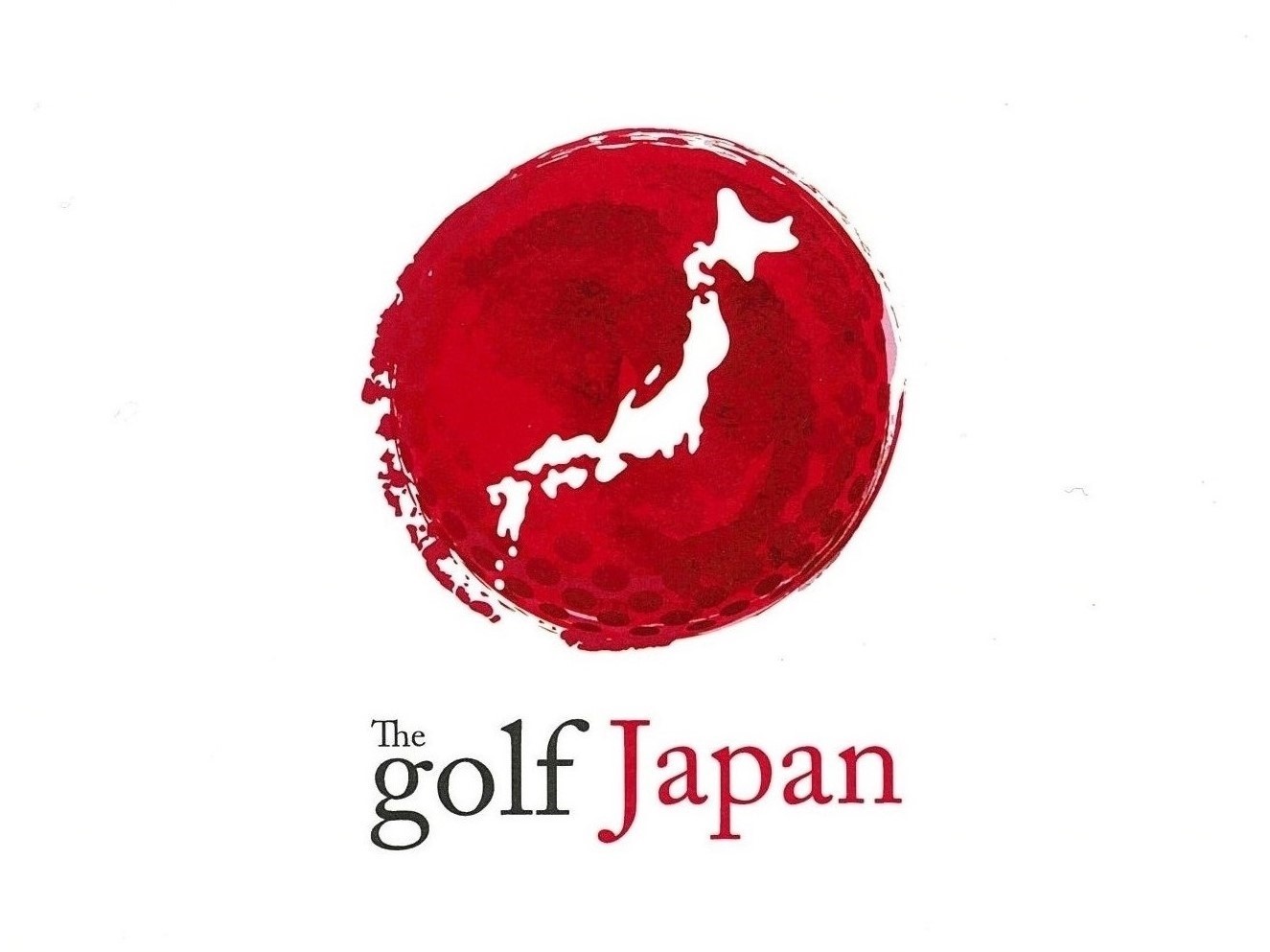I visited the shore of Lake Biwa, the largest lake in Japan in the Kansai region in autumn.
It’s a little early for the autumn leaves season, but the leaves of the trees are starting to color little by little.
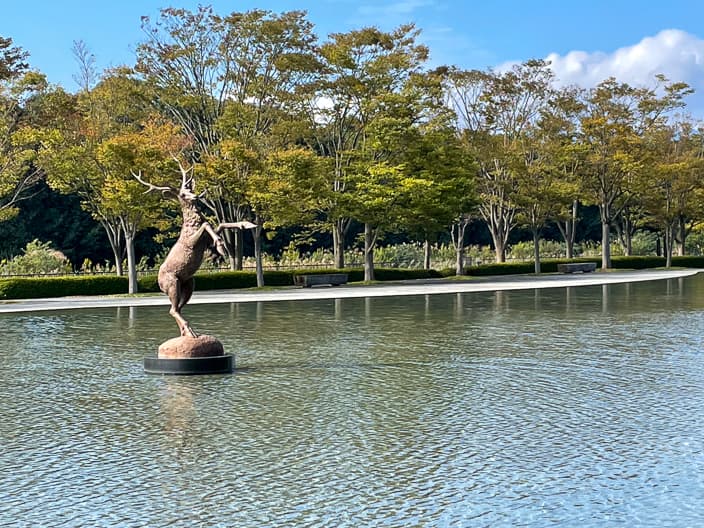
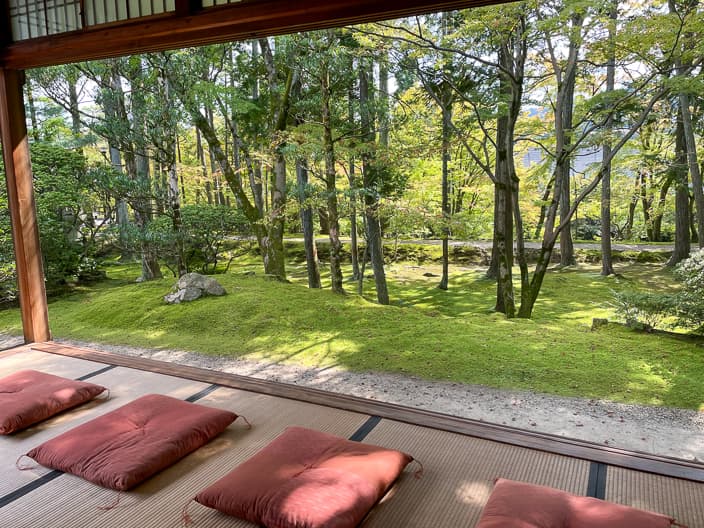
There is a beautiful 36-hole champion course “Lake Biwa Country Club” in Ritto City, which is a little inland from the shore of Lake Biwa, and in the town of Horse, which is famous for the training center of the Japan Racing Association.
Last month (October 2021), Japan’s leading professional golf major tournament “Japan Open Golf Championship” was held on this course.
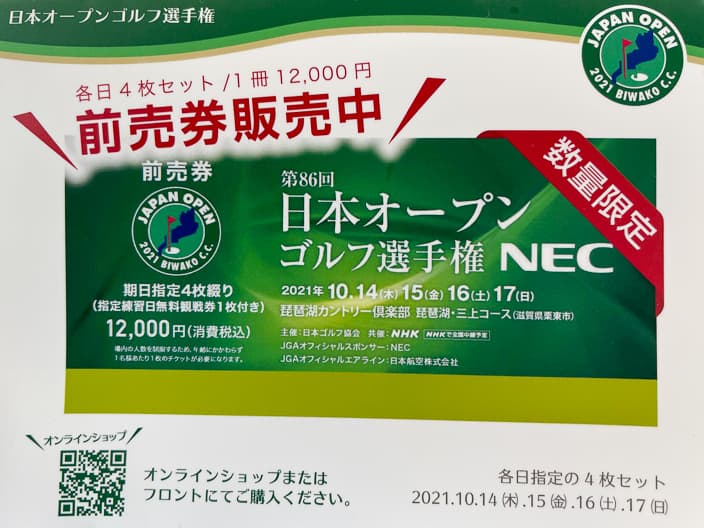
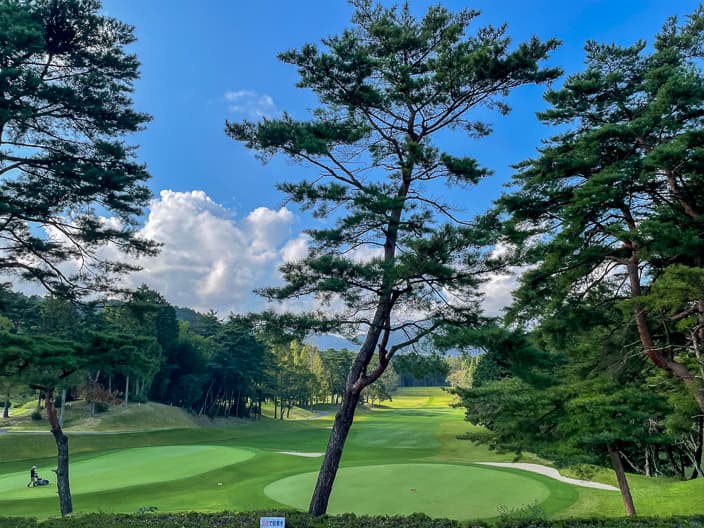
The history of the tournament began in 1927, and this year it was held at the Hodogaya Country Club in Yokohama, but Rokuro Akaboshi, who was still an amateur, won the championship with a whopping 10 strokes behind second place.
Since then, amateur championship winners and top professionals from the top 20 in the prize money ranking have participated in the major tournament to decide the best men’s golf in Japan, and the winner will be given an unconditional seed for 5 years…
The Lake Biwa Country Club opened in 1959, about 30 years after the Japan Open Championship began, with 9 holes (Ritto Course) as the first golf course in Shiga Prefecture.
The opportunity to open the course was planned by Ritto Town as part of the town development in anticipation of the opening of the Tomei Expressway, and the construction of a golf course proceeded by requested to Yanmar Diesel Co., Ltd., a leading company that has many manufacturing bases in Shiga Prefecture. In 1960, the year after the opening, 9 holes (Lake Biwa course) were added to 18 holes, and in 1968, 9 holes (Mikami course) were added to make a total of 36 holes.
The historic “Lake Biwa Country Club” is now aiming to be a “naturally symbiotic golf course” that works on resource recycling in anticipation of the needs of the times. The course announced that it will achieve Japan’s first carbon-neutral carbon emission with virtually zero CO2 emissions by the end of this fiscal year through a total energy solution that uses the solar power generation system of Yanmar Diesel.
The course was designed by Seizo Tomizawa, a popular master at the time, and he was the green keeper of the Musashino Country Club in Chiba Prefecture, which was Japan’s first 36-hole course (closed due to military requisition during the war and is now a Self-Defense Forces base). After that, he studied under famous designers such as Komyo Otani, Rokuro Akaboshi, and Seiichi Inoue, then he worked together with his son Hirochika Tomizawa on more than 100 courses in Japan and overseas, contributing to the spread and popularization of golf.
In this course, the 58th “Japan Open Golf Championship” was held in 1993, and after that, “Japan Women’s Professional Golf Championship” in 1999, “Japan Senior Open Championship” in 2009, and “Japan Women’s Open” in 2014 was held, and various dramas have been developed as a champion course representing Japan.
In particular, the last Japan Open in 1993 was the heyday of Jumbo Ozaki, but as a result of the legendary death battle, challenger Yasumi Okuda won the championship by reversing the difference of two strokes on the final day.
At that time, Jumbo Ozaki, Aoki, and Nakajima’s “AON” had monopolized the title of the Japan Open for eight years. The following year, in the 59th tournament in 1994, Jumbo Ozaki showed his will to win the championship for the fifth time with the lowest score of 18 under in the tournament.
And this year, the second “Japan Open Golf Championship” was held for the course.
As a result, South African veteran Shaun Norris won the championship with a total of 19 unders, breaking the tournament’s minimum stroke record held by Jumbo Ozaki for the first time in 27 years. Yuki Inamori, who aimed to win the tournament in a row, and Yuta Ikeda, the champion of 2014 and 2017, desperately chased, but Norris escaped without giving up the lead from the second day with stable play. It was said that the key to winning or losing this course was how to capture the difficult green with a slope, but a polite attack that did not leave a down putt was successful. In his sixth year on the Japan tour, he won the title of the best player in Japan. Even after the successful winning putt, he did not make a flashy guts pose, and I felt that Norris was completely familiar with Japan as he bowed deeply toward the spectators.
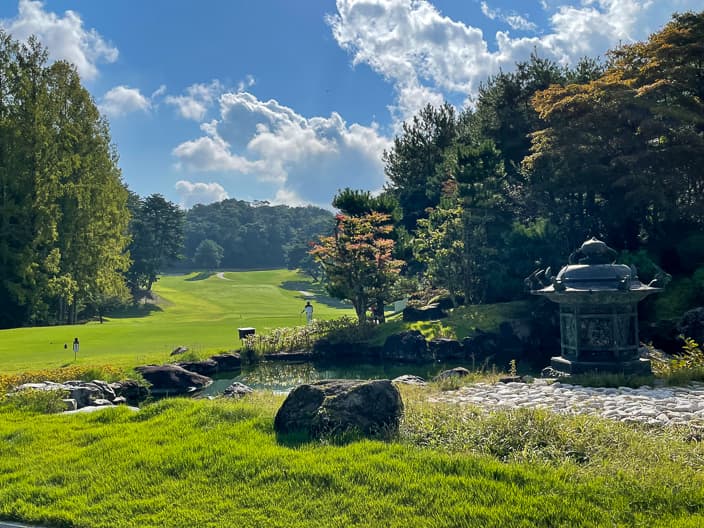

The last time the Japan Open in 1993 was the “Mikami Course” and the “Ritto Course”, but this time the “Mikami Course” and the “Lake Biwa Course” were used, with a total length of 6,986 yards par 71.
For this tournament, the “Lake Biwa Course” was remodeled under the supervision of Australian famous player Greg Norman, who was famous for the nickname of White Shark, who won the British Open twice and won the first place in the world prize ranking.
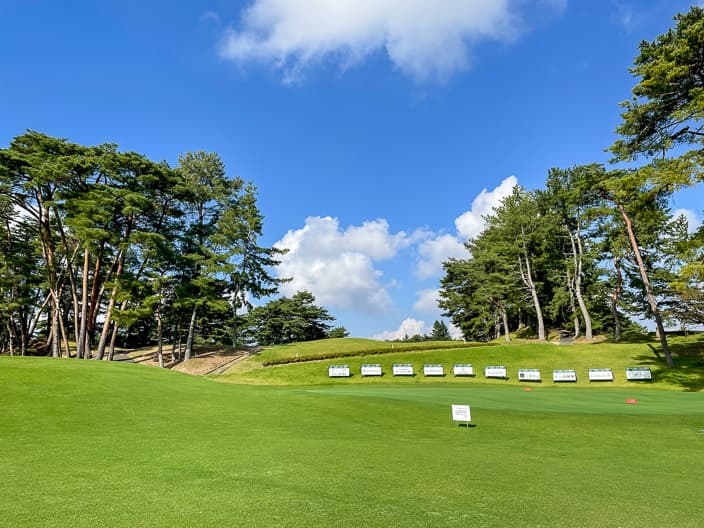
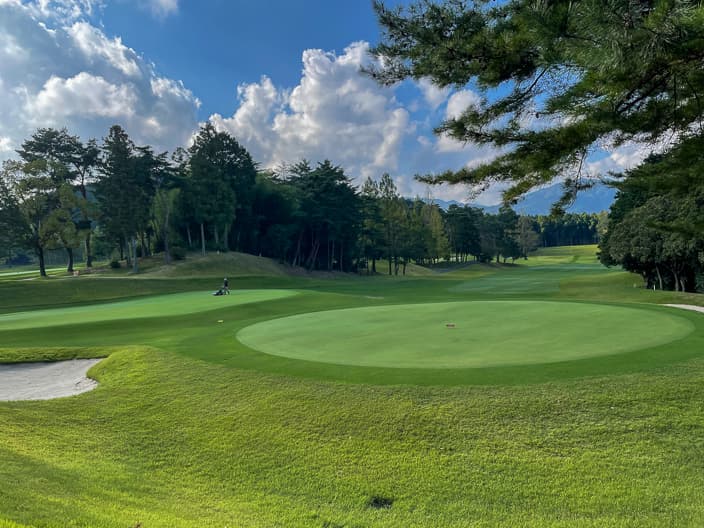
Fortunately, I had the opportunity to play at this “Lake Biwa Country Club” one week before the major tournament.
However, the course, which had reached the end of the preparation for the major tournament specifications, had difficulty such as narrow fairways, deep roughs, and high-speed greens, and there was no way to go to this, resulting in a bad score.
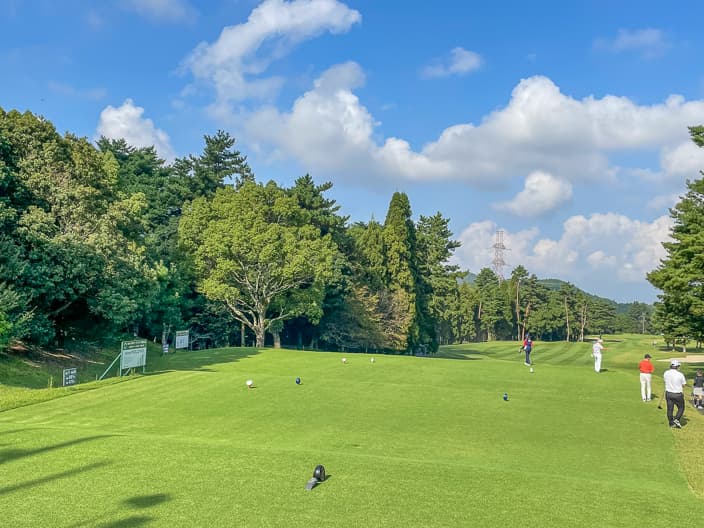

Let’s take a look at the course.
More than 60 years have passed since it opened in 1959, and the “Ritto Course” is a stately forest and hill course that is completely separated from the large pine forest.
The fairway is flat, but the distance is sufficient and you can enjoy a dynamic shot, but the surrounding trees are dense, so if you drive into the forest, you will have a hard time escaping.
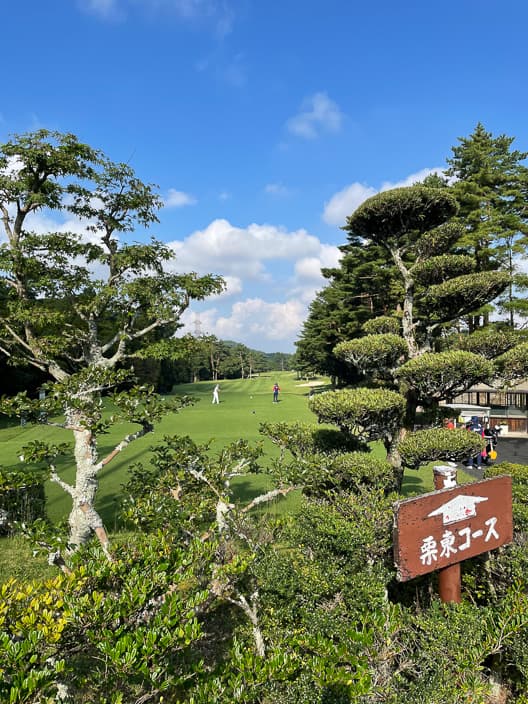
The first hole (501 yards, par 5), with pine trees rising to the left and right of the fairway, creates an image of a gentle S-shape. If you avoid this well, the distance will be relatively short and you will have a birdie chance.
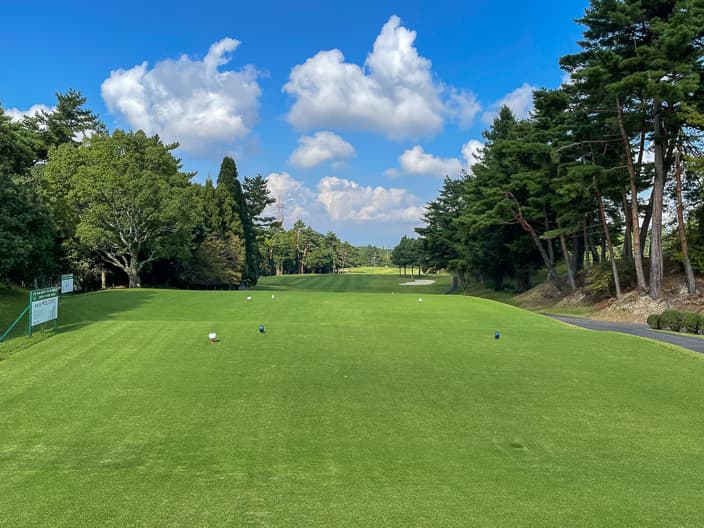
2nd hole (181 yards, par 3) A slightly launched short hole. It is straight, but the OB line continues on the left side, so hook balls are prohibited, and it is difficult to make a two-tiered green with a steep slope.
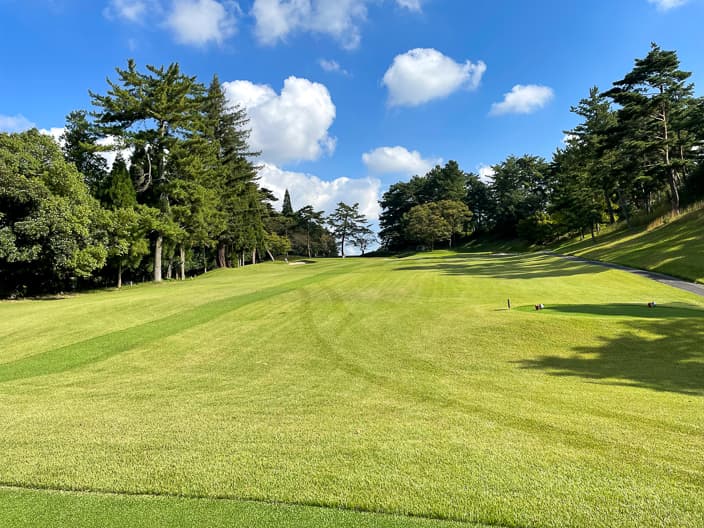
The 3rd hole (367 yards, par 4) is a straight and flat middle hole, but there are cross bunkers on the left and right in the middle of the fairway, so be careful with tee shots. The horizontally long green is shaped like a mortar with high left and right sides, making it difficult to feel the distance when putting.
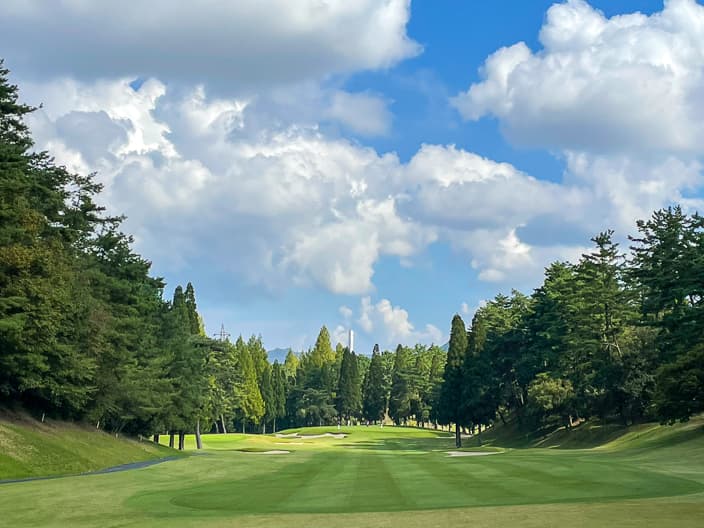
The 4th hole (428 yards, par 4) is a middle hole with a large pond in front of the tee ground, so be careful with tee shots. If you aim at the right side where the width of the pond is a little narrow, the forest protrudes in front, so it is a difficult hole that you can not aim at the green with the second shot.
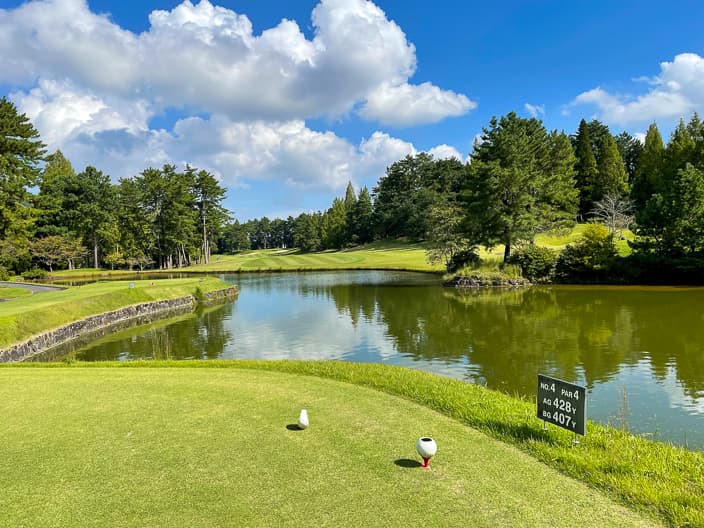
5th hole (505 yards, par 5) A straight, flat long hole. However, there are guard bunkers on the left and right sides of the fairway, with tall pine branches protruding around it, and thick trees standing in front of the green to prevent the approach.
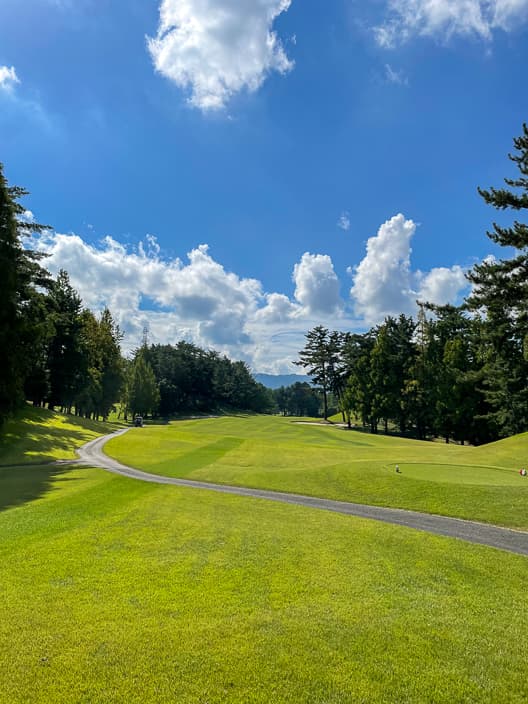
The 6th hole (185 yards, par 3) There is a large pond in front of the tee ground that spreads to the left and right, and the green on the opposite bank reflected in it is an impressive hole. There is plenty of distance and there are many guard bunkers around the green, which makes it more difficult. If you are admired by the beautiful scenery, the ball will be sucked into the pond.
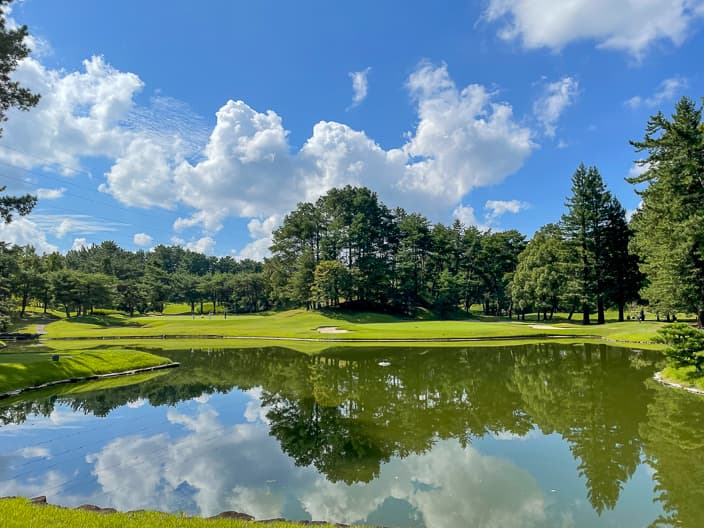
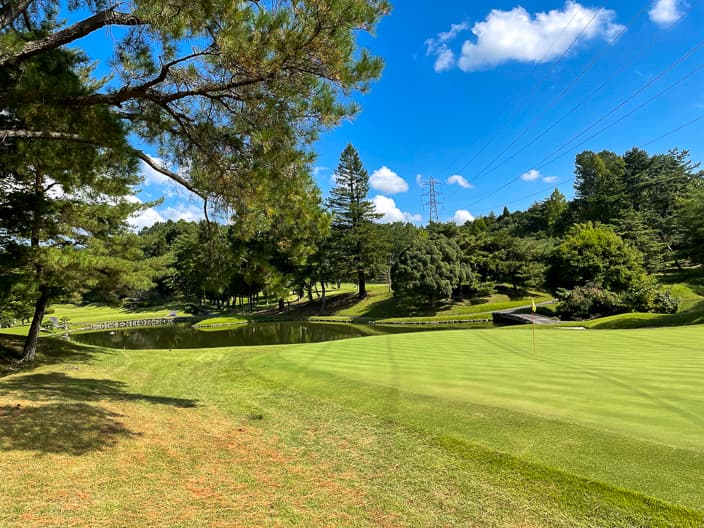
7th hole (388 yards, par 4) It seems that it is easy to get a par on a straight middle hole, but it is not easy because there are big cross bunkers on the left and right and the green is also ridged.
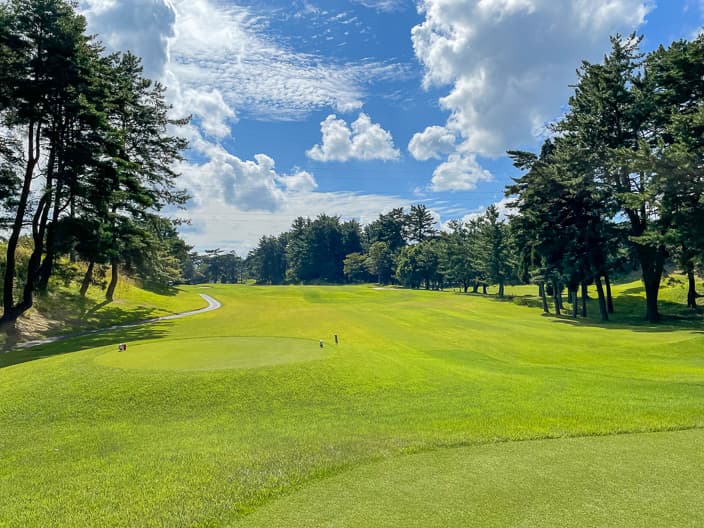
The 8th hole (382 yards, par 4) is a slightly downhill middle hole, but a large tree protrudes from the right side of the tee ground, and a large cross bunker can be seen on the left side of the front, so you feel pressure when hitting a tee shot.
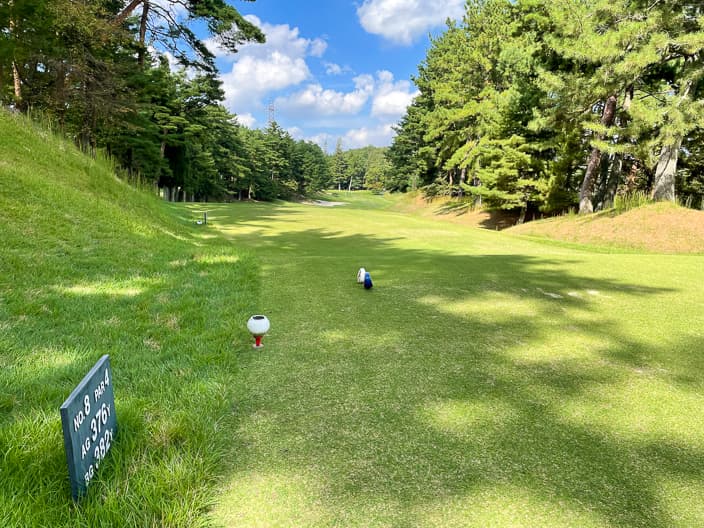
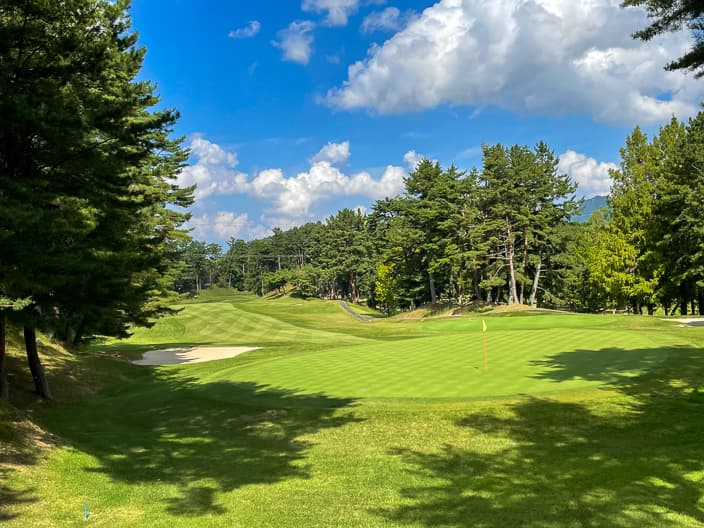
The 9th hole (398 yards, par 4) is slightly launched, and the fairway gently curves to the left and slopes to the right, so it is a hole that you want to aim for the left cart pass direction.
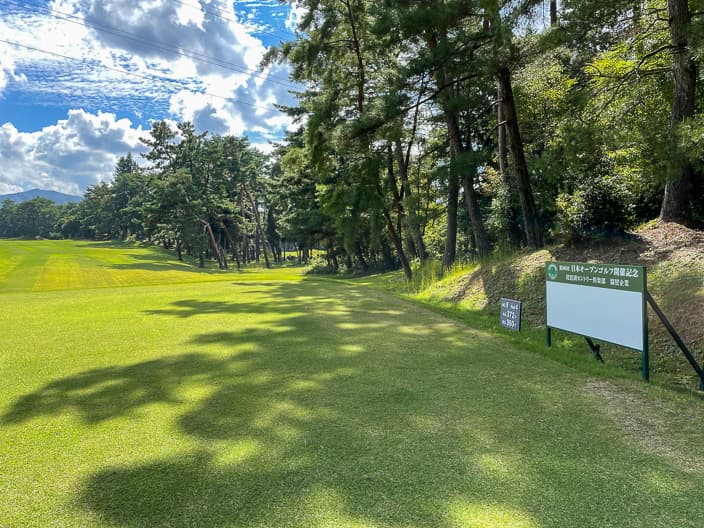
The “Mikami Course”, which was used this time following the previous Japan Open in 1993, is a difficult course where various hazards await, even though it is flat, and the skill of the player is tested.
The origin of the course name is Mt. Mikami (elevation 432m), which is a landmark in the Koto (eastside of the Lake Biwa) area and is also called Omi Fuji, and has a beautiful ridge-line.
At the foot of the mountain, there is Mikami Shrine, which enshrines Mt. Mikami as a god, and the main shrine built during the Kamakura period is said to be designated as a national treasure.
1st hole (530 yards, par 5) This course also starts from a long hole. In front of the tee ground, there is a large pond that spreads to the left and right, and there are standing trees and cross bunkers in the fairway beyond that, which narrows the fairway, so the tee shot feels pressure.
There is a large pond in front of the tee ground, and the trees and cross bunkers in front of it narrow the fairway, so the tee shot feels pressure.
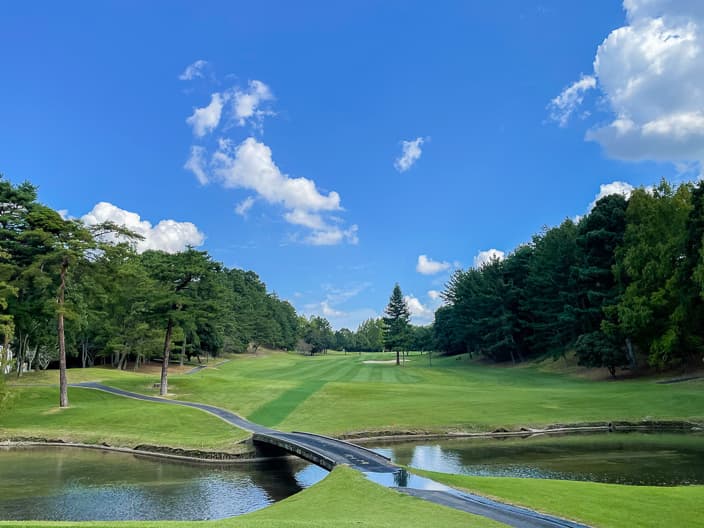
The 2nd hole (394 yards, par 4) is a straight middle hole, but it is a must to attack from the left side as the dense tall trees and OB line continue to the green on the right side. There are many large guard bunkers in front of the green, and you want to aim for a larger approach, but you also need to pay attention to the OB at the back of the green.
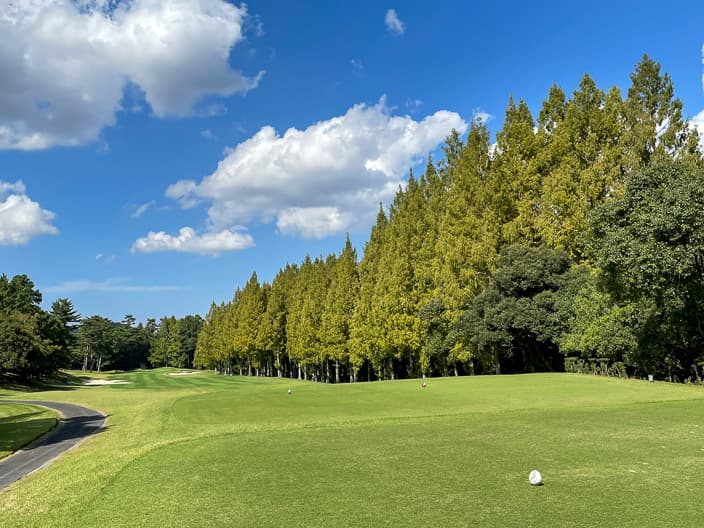
The 3rd hole (330 yards, par 4) is a relatively short middle hole, but the green is on the far right and there is a tree in the foreground, making it difficult to approach. In addition, the green is divided into left and right and the slope is steep, and it is said that putting is the most difficult on the course.
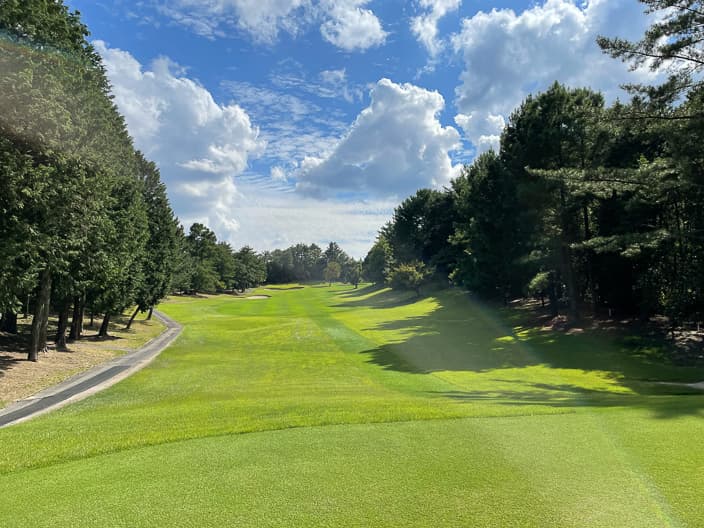
The 4th hole (158 yards, par 3) is not long in terms of distance, but the valley crosses in front of the tee ground and it is difficult to get a sense of distance on the tee shot. Also, be careful of tee shots as 5 bunkers guard the area around the green.
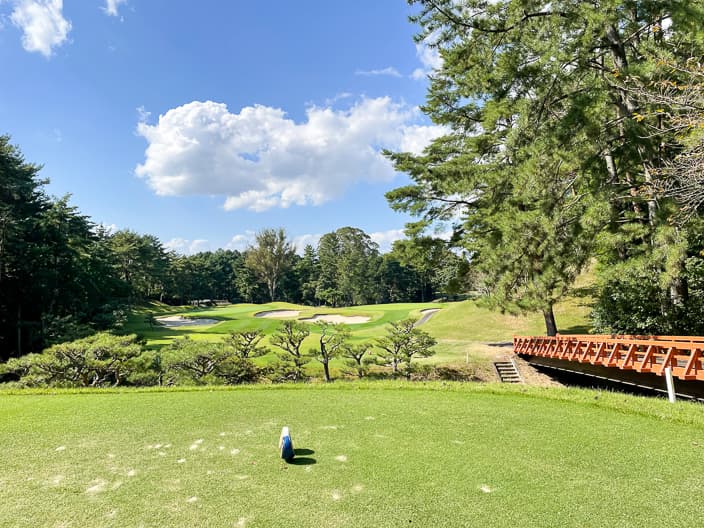
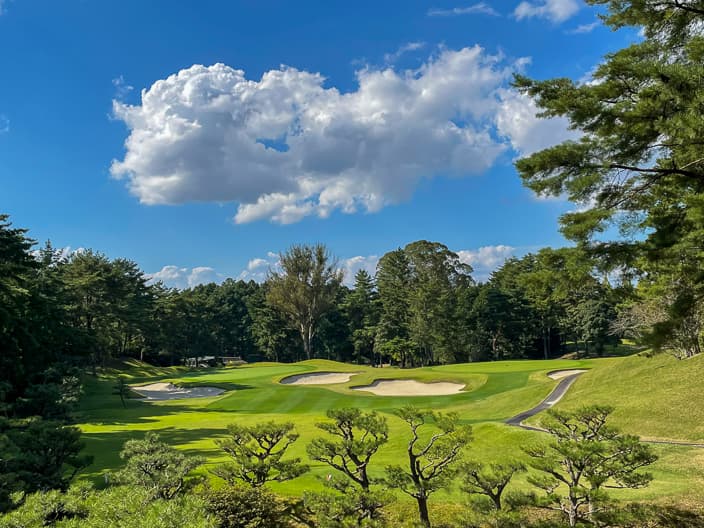
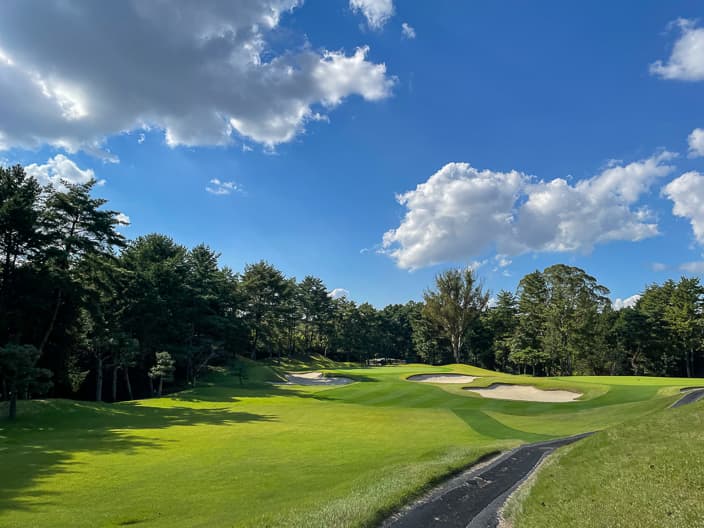
The 5th hole (412 yards, par 4) is a middle hole with a curve to the right. The green is long vertically and the slope is steep, so it is extremely difficult to get a par.
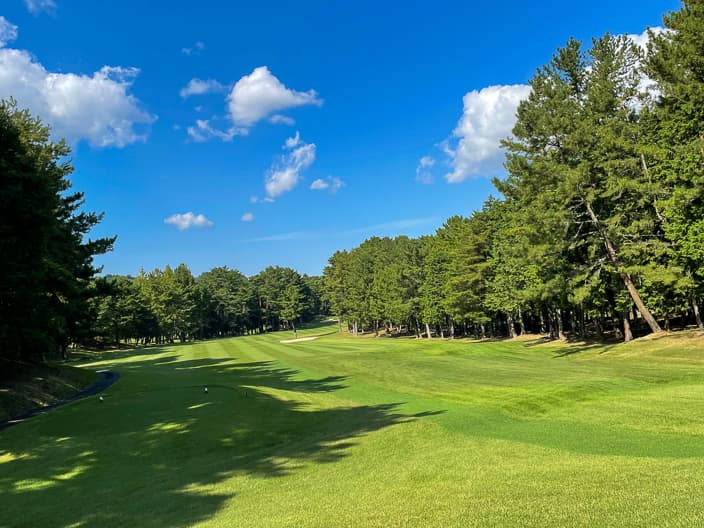
The 6th hole (374 yards, par 4) has a pond in front of the tee ground, and docks to the left from the vicinity of the large cross bunker on the left side of the pond. If possible, you want to aim to the right, but there is a big tree there and the direction of the tee shot is difficult. In addition, there is a standing tree in front of the green, and the two-tiered green with a steep slope requires careful putting.
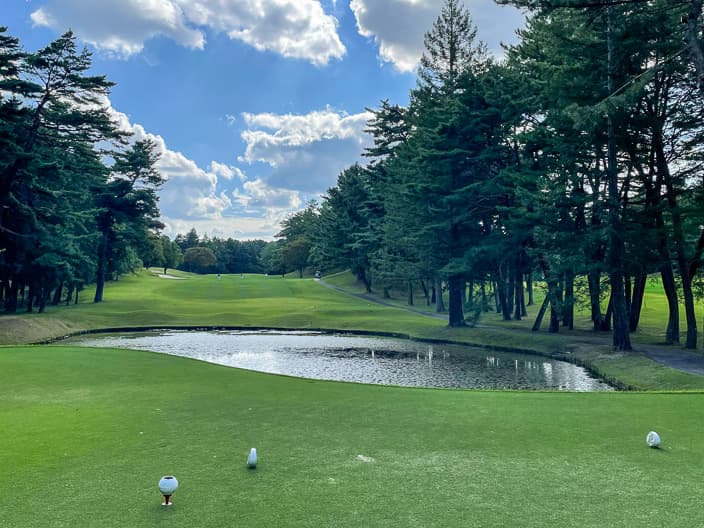
The 7th hole (503 yards, par 5) is a different hole where even professional players struggled and the score was moved much in Japan Open. The fairway is narrow with slopes coming from both sides, and the green is hidden behind a mountain on the left, so you need to aim accurately at the right-hand skirt. There are deep bunkers on both sides in front of the small elevated green, so approaches were difficult and many professionals had a hard time.
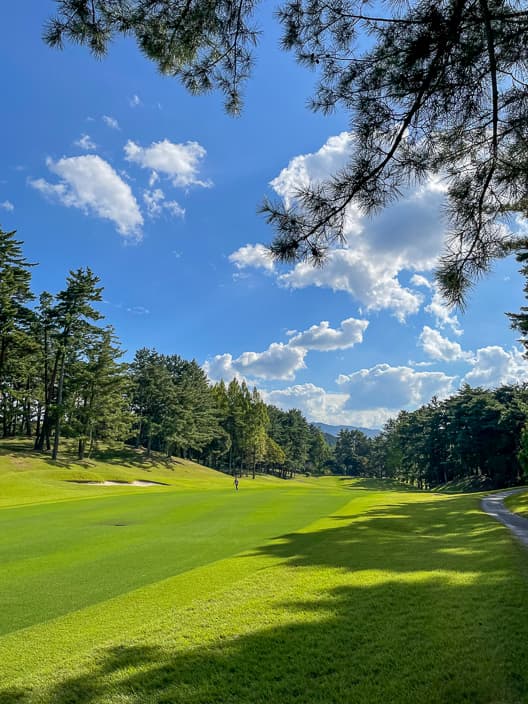
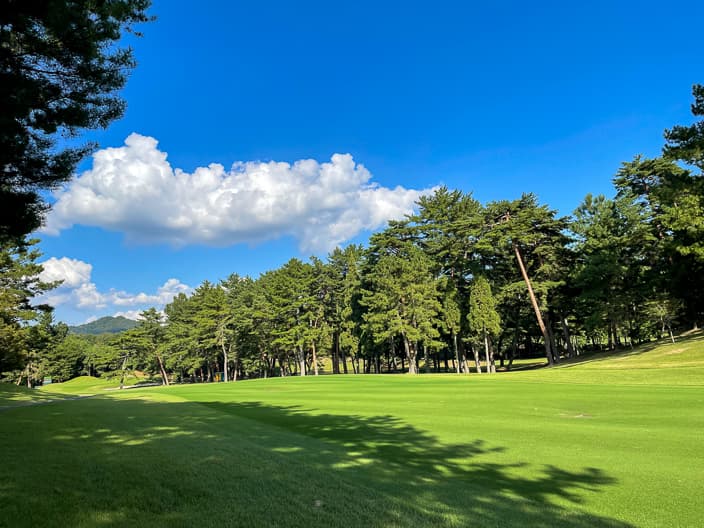
The 8th hole (170 yards, par 3), a thatched-roof Japanese-style hut in the back of the tee ground, was conspicuous on TV. It is a slightly downhill straight short hole, but the guard bunker is deep and the green is steep from the back, so it was a difficult hole for professionals to get a par depending on where the tee shot was dropped.
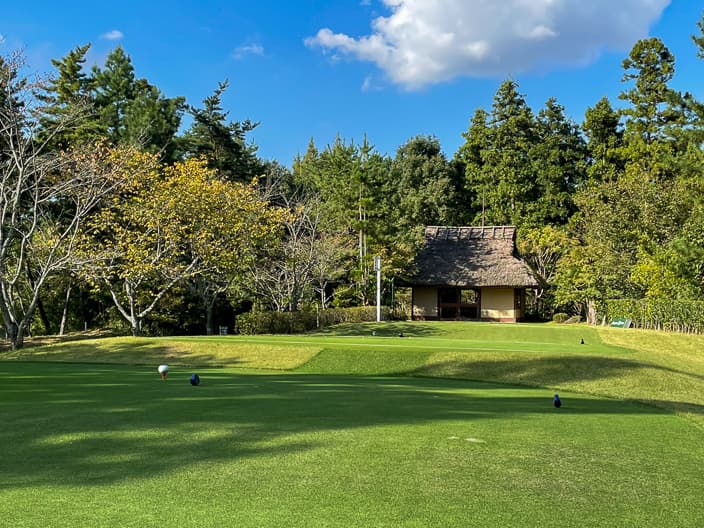
The 9th hole (387 yards, par 4) is an impressive signature hole that will be the final hole of the Japan Open. There is a large vertical pond that imitates Lake Biwa in the middle of the fairway, and to aim for the green with the second shot, hit the tee shot in the direction of the pond without fear of risk, or aim safely from the right side of the fairway to be prepared for a long distance to remain. Anyway, you will be forced to choose whether to go safely or bravely.
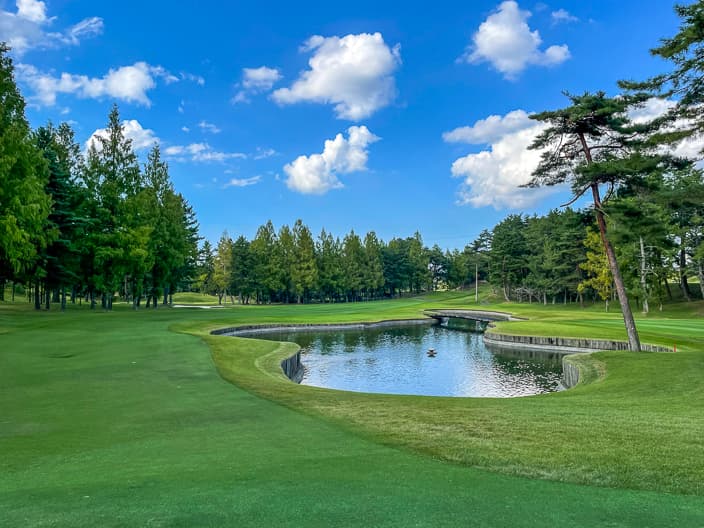
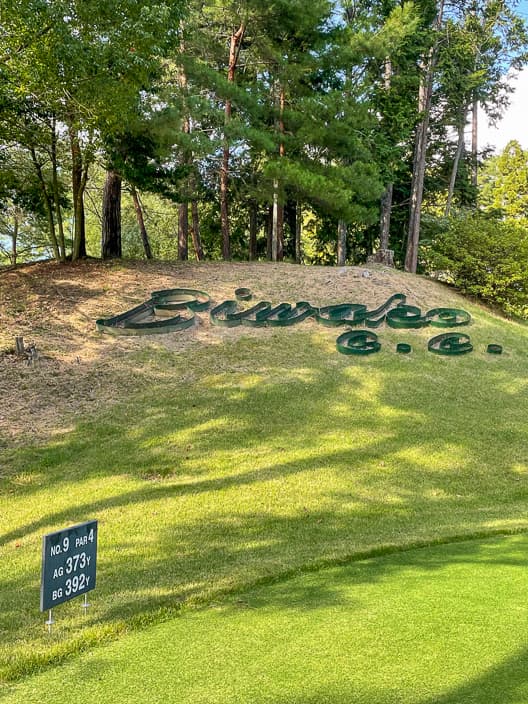
The green is an elongated two-tiered green with a constricted central part and a steep slope from the back. In addition, the guard bunker in front of the green is deep, and the pin position was set in front of the green on the final day of the Japan Open, so it was a dramatic final hole with many professional players caught in the pond and this bunker.
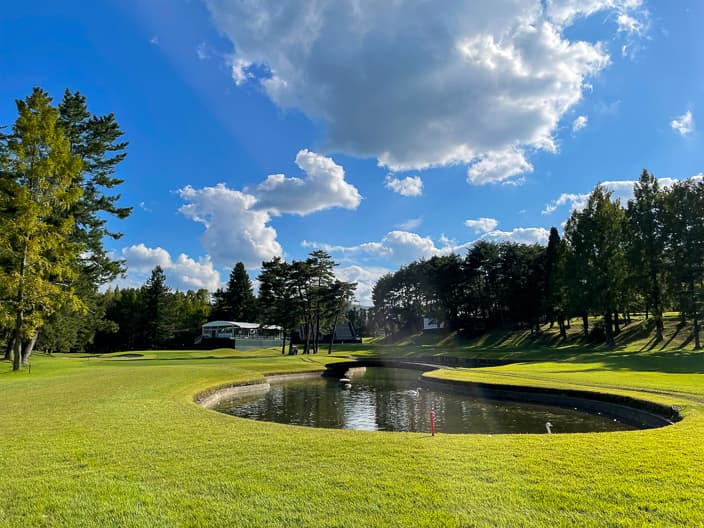
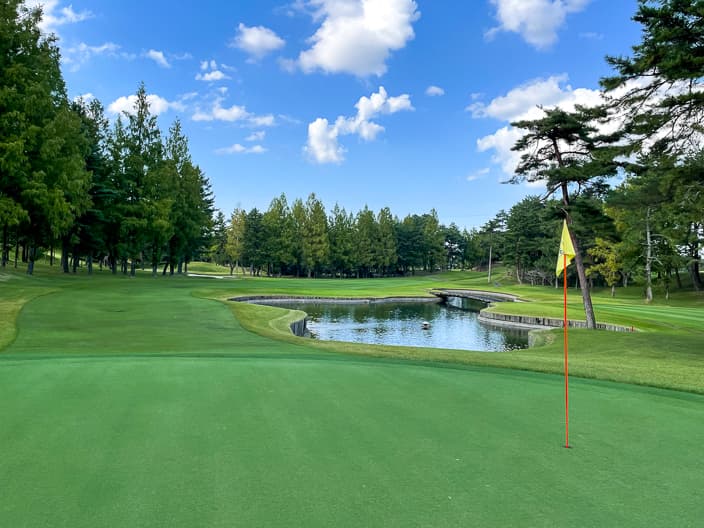
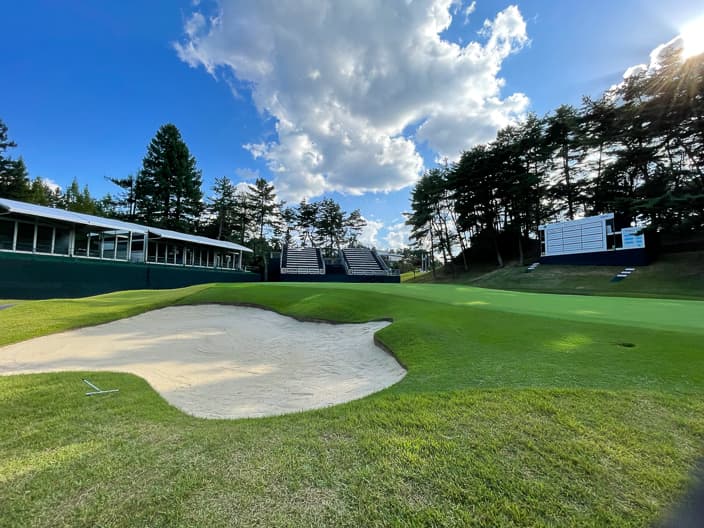
It is conveniently located just 5 minutes from the Ritto Interchange on the Tomei Expressway, and is easily accessible from Osaka and Kobe as well as Shiga and Kyoto.
The small clubhouse is not flashy, but it has an elegant appearance that is typical of a prestigious course. The course condition is excellent, the caddies and staff are kind and pleasant, and I’m able to play really comfortably regardless of the score.
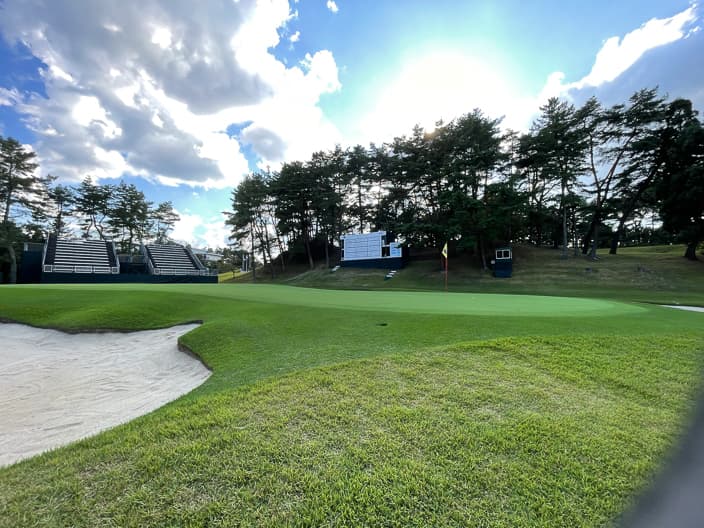
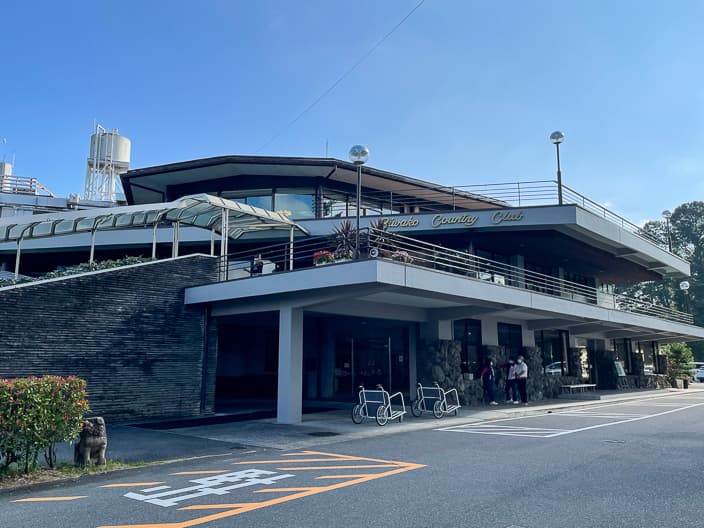
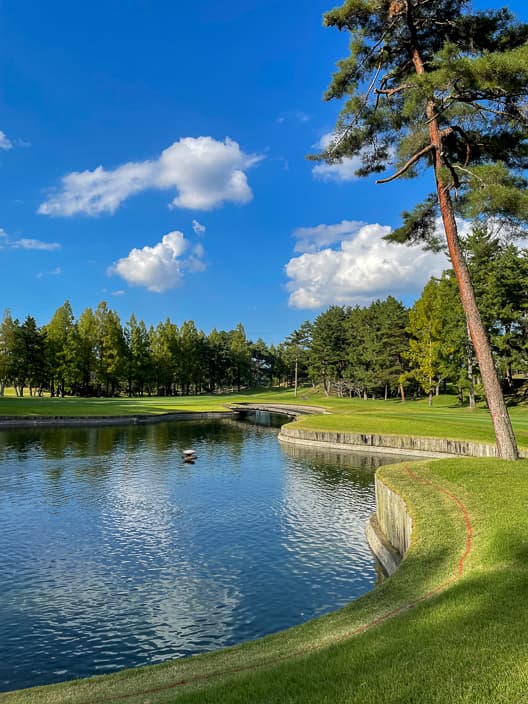
Biwako Country Club
| Address | 513 Misono, Ritto-shi, SHIGA |
| TEL | 077-558-0121 |
| Website | https://www.biwakocc.info/#HOME |
